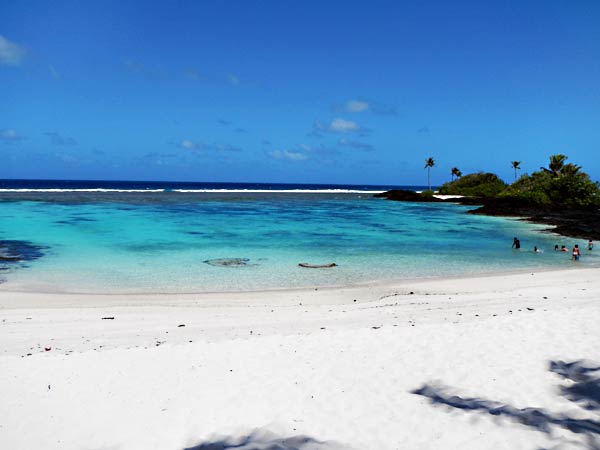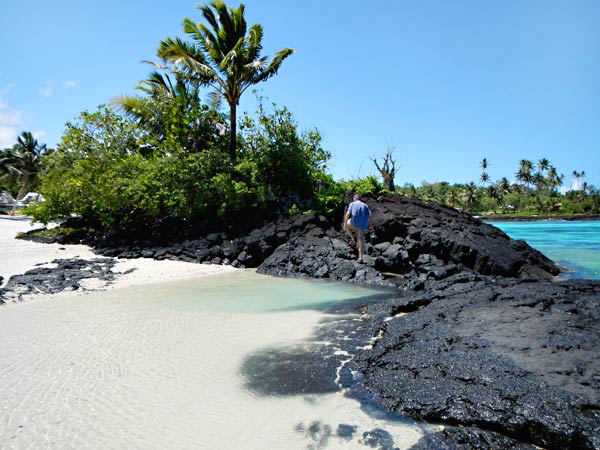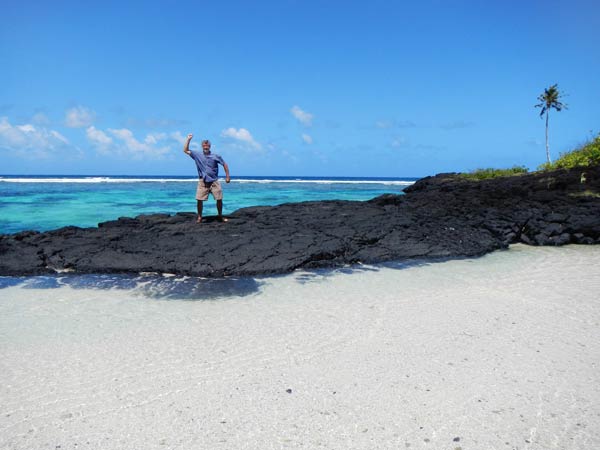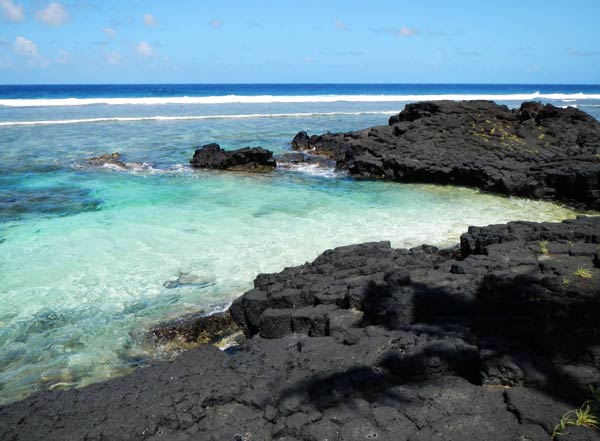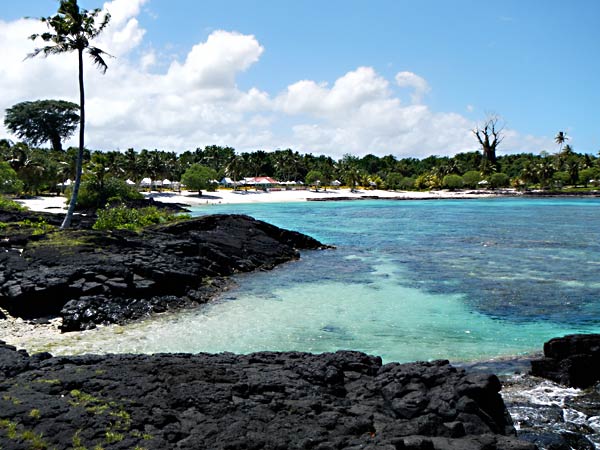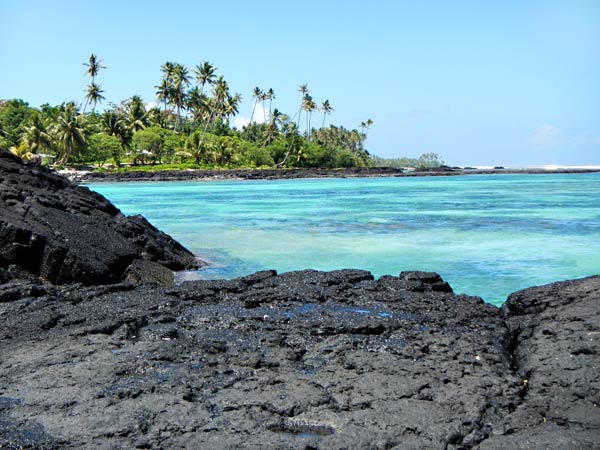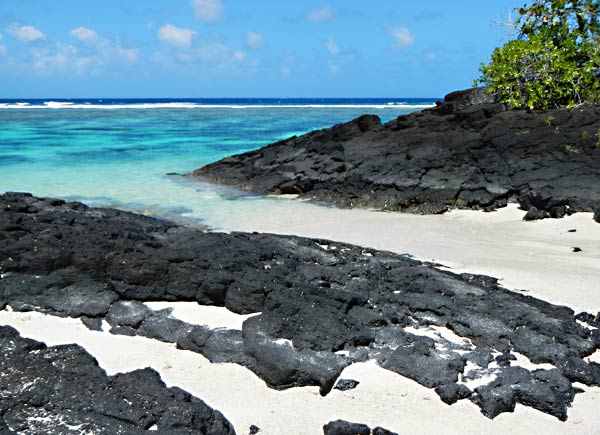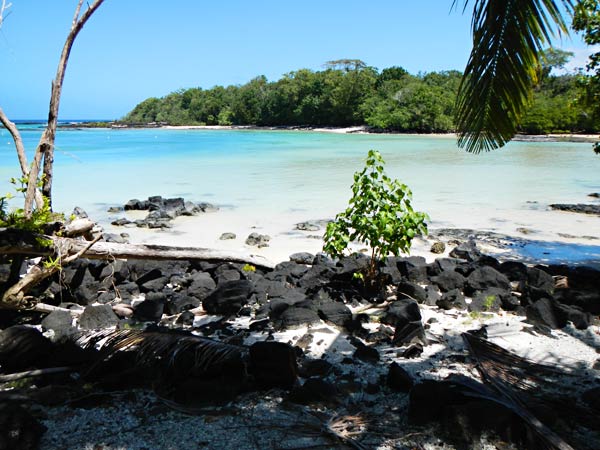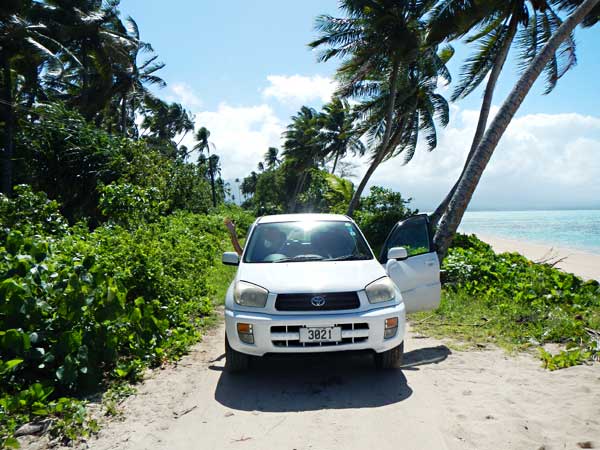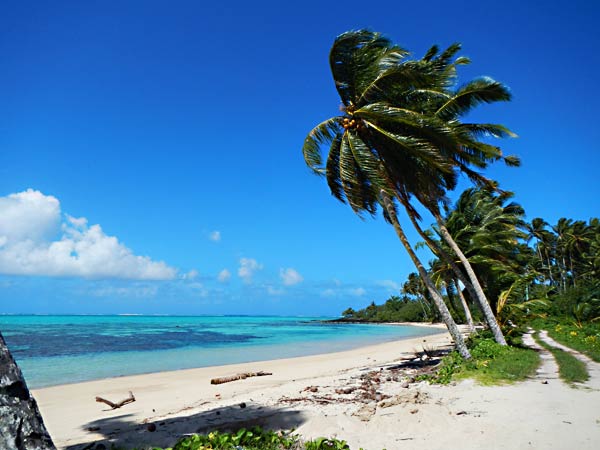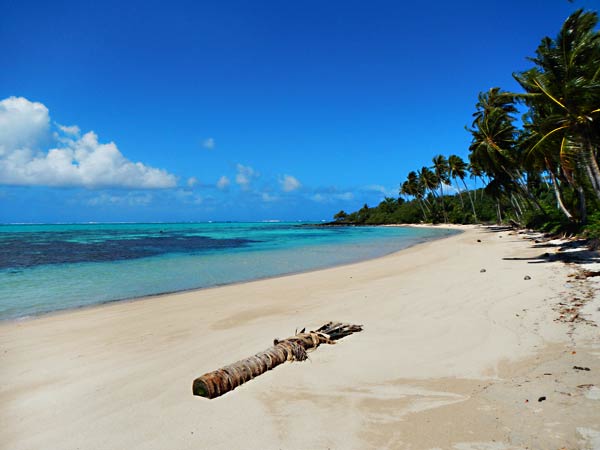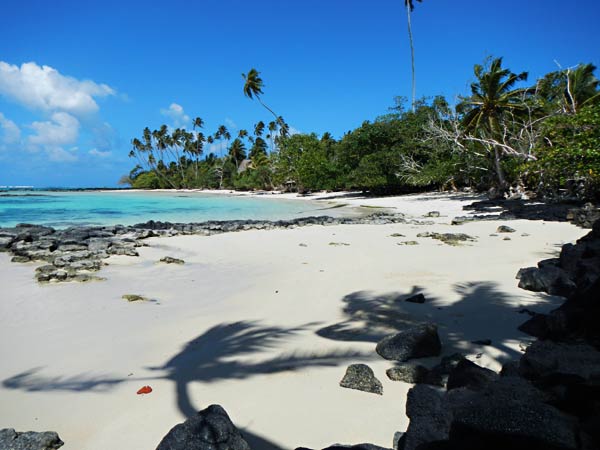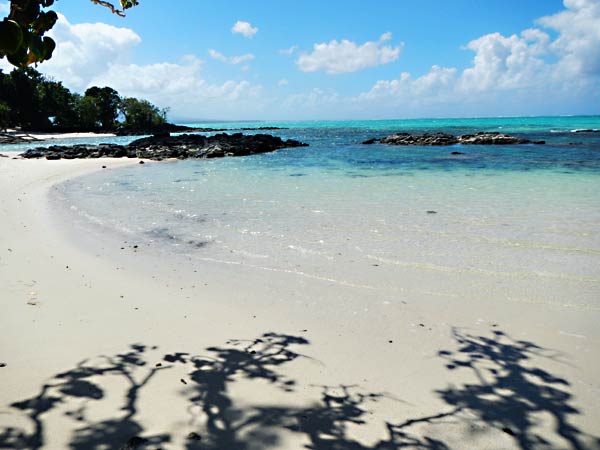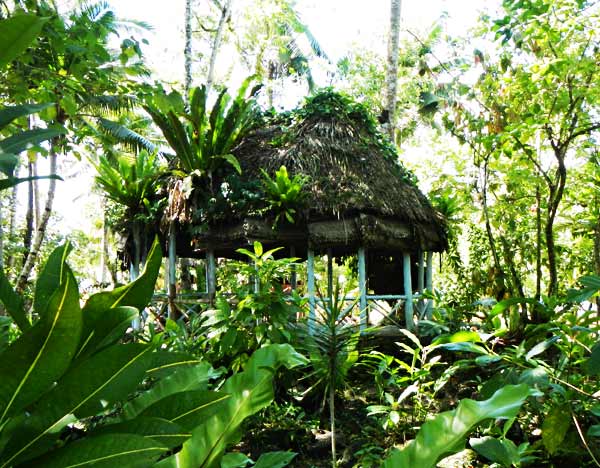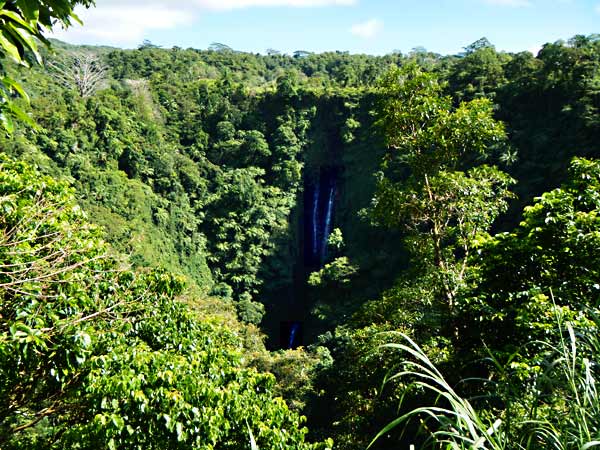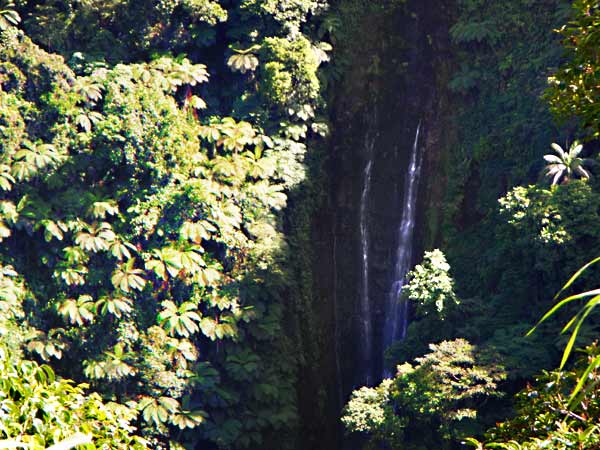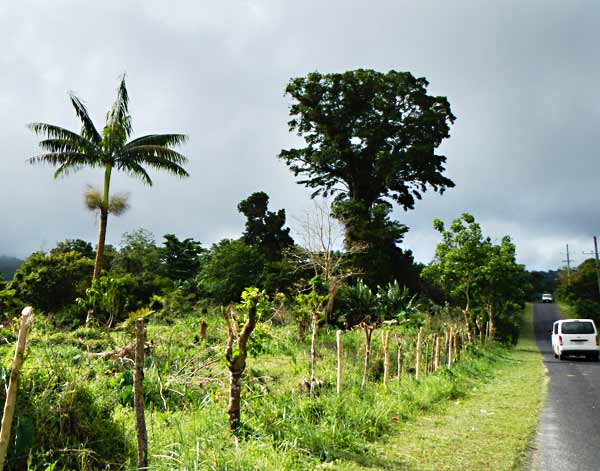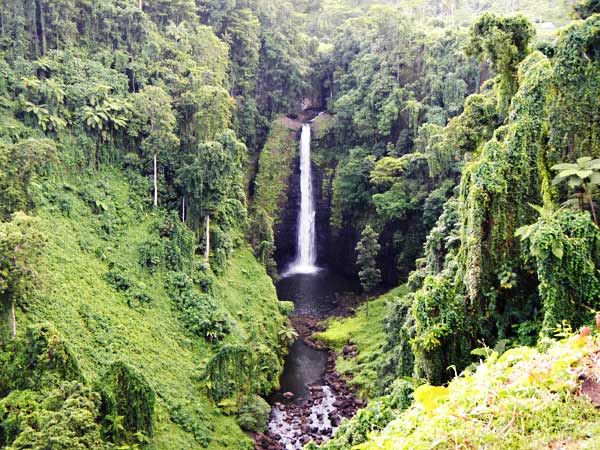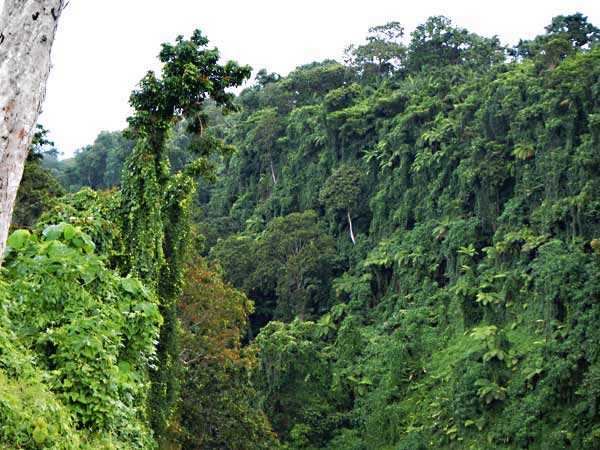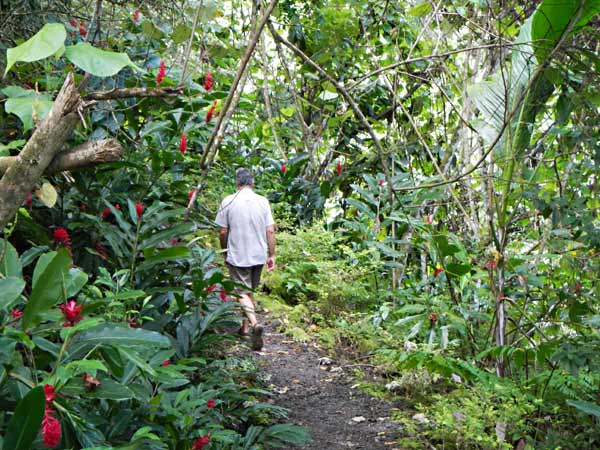September 12, 2012
As we didn’t have enough time to do everything, we decided to pick one from the three choices on the next stretch of coast. There was a beautiful set of beaches called Salamumu or the Return to Paradise beach (which was featured in the movie of the same name) or Matareva, which was described as having “delightful” coves and rock pools. The last one sounded best to us.
Once again, I only spotted the smallest street sign as we passed it, forcing us to turn around and head back to where a few large Samoan men were lying around a roadside fale like a pod of beached whales. We pulled up, hating to interrupt the group nap, and asked about heading down the unpaved road. It would be 15 tala, which was a little steep, but we decided to pay the price and head down.
It was a couple of miles down an unpaved road to the coast, but worth the drive once we got there. We found yet another fale resort on a beautiful crescent of white sand beach. Enclosing one side of the cove was an area of black lava rock and pools that we could walk out on. It was quite beautiful and well worth price we paid and the risk we took in disturbing the pod of large Samoans. -Cyndi
